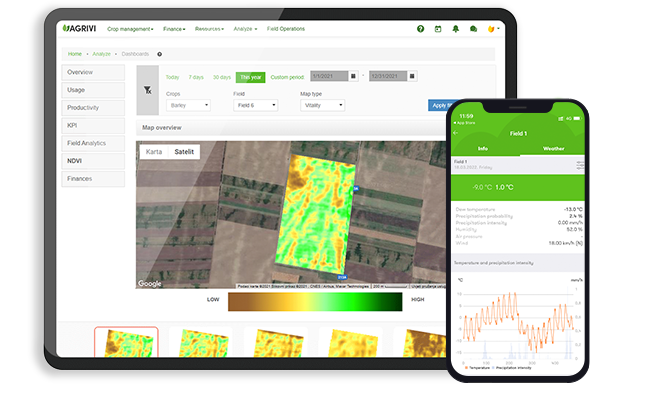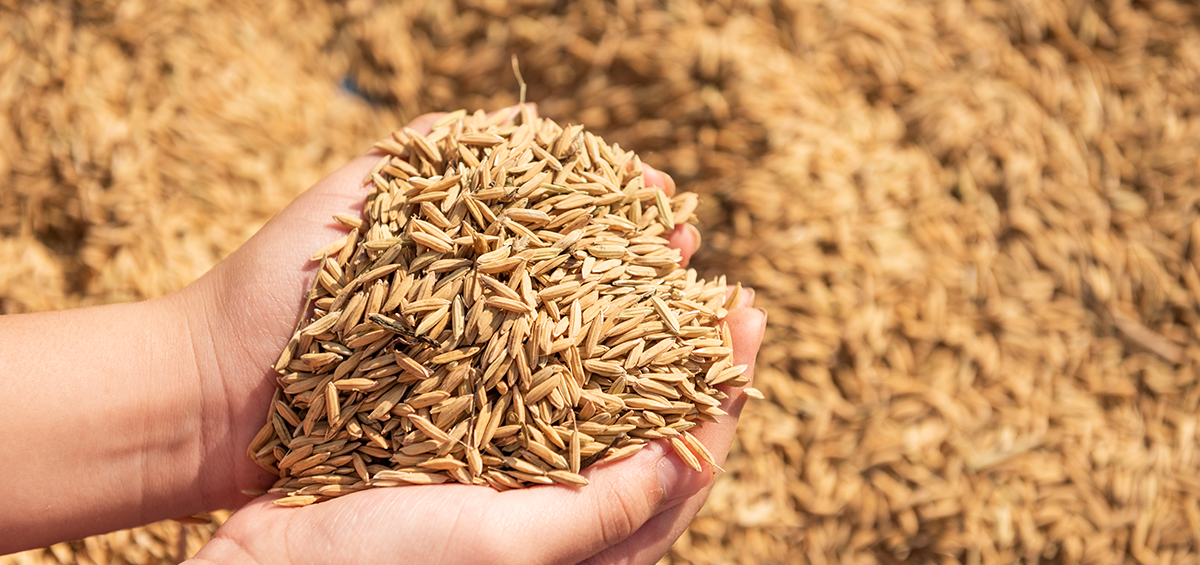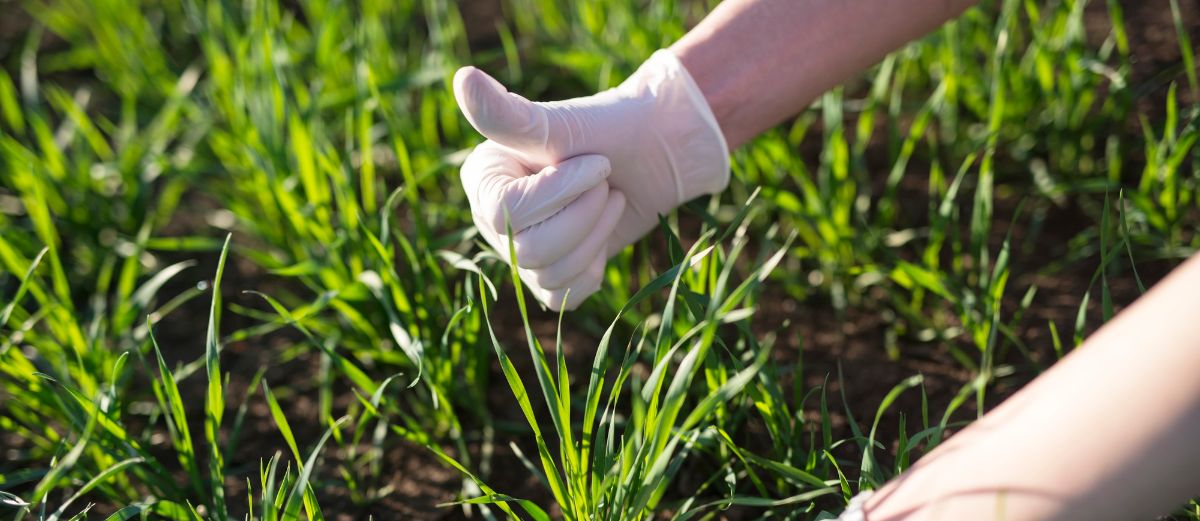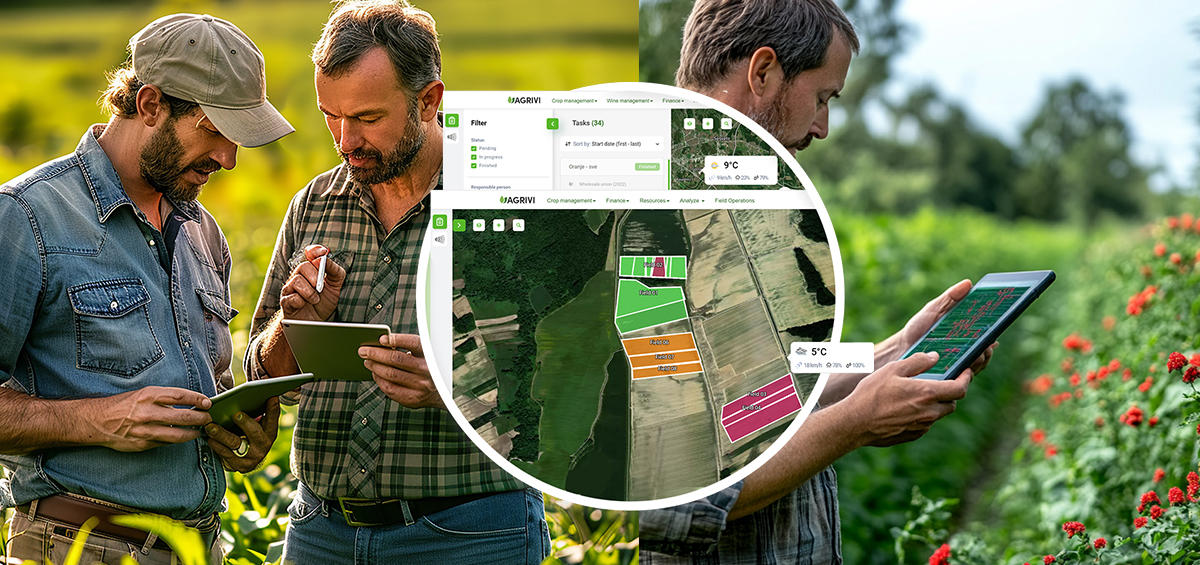Sustainable agriculture is key to reducing the environmental impacts of global farming systems.
But how do growers implement sustainable practices while maintaining the efficiency and profitability of their farming operations? Farm management software makes farming sustainably easier, more effective, and more profitable.
Table of Contents
What Does Sustainable Agriculture Mean?
Sustainable agriculture is farming in ways that don’t harm the environment or compromise the ability of future generations to meet their food system needs. Sustainable agricultural systems focus on ecosystems, considering not just the environmental impacts of a single farm within its boundaries but the entire food production system based on ever-expanding spheres of influence. A single farm’s impact on environmental quality may be relatively minor, but the effect of an agriculture community is felt worldwide.
For instance, according to the Food and Agriculture Organization of the United States (FAO), a globally applied effort to improve the efficiency of livestock production systems could reduce emissions that contribute to global warming without jeopardizing global food security. This would be considered a sustainable approach to global livestock production.
However, sustainability remains a vague term and can imply different things depending on how it is applied and the expectations. And there are no specific standards or market approval processes for sustainable agriculture, such as those mandated for organic crops sold under certified organic labeling.
According to the United States Department of Agriculture (USDA), sustainable agriculture means an integrated system of plant and animal production practices having a site-specific application that will, over the long term:
- Satisfy human food and fibre needs;
- Enhance environmental quality and the natural resource base upon which the agricultural economy depends;
- Make the most efficient use of nonrenewable resources and on-farm resources and integrate, where appropriate, natural biological cycles and controls;
- Sustain the economic viability of farm operations; and
- Enhance the quality of life for farmers and society as a whole.”
So, sustainable farming is a big, broad topic and can be challenging to define. From a regulatory perspective, policymakers may develop slightly different definitions of sustainability for their agricultural policy, complicating matters for farmers selling across borders. But there are main components accepted as necessary to producing sustainable food.
3 Main Components of Sustainable Agriculture
Three areas must be met to achieve sustainable farming.
· Economic
A sustainable agricultural system must be profitable. Farming is not a non-profit endeavor. Farmers must be able to earn a fair and secure living for themselves and their families.
· Environment
Sustainable farming must sustain the environment, employing stewardship practices to protect crucial natural resources such as water systems, healthy soil, air quality and species biodiversity.
· Community
Sustainable agriculture supports thriving rural communities with good jobs and fair treatment of farmworkers and enhances the quality of life for farming and ranching communities.
Sustainable Agriculture: Can it Support the Environment?
Positive environmental impacts and sustainable farming practices are closely connected. When both are supported, they are mutually beneficial, working synergistically for better outcomes. Conversely, poor farm practices lead to degraded environmental quality, and a stressed environment negatively impacts farmers’ profitability.
Soil Health and Environmental Impacts
Healthy soil is a critical component of sustainable farming with numerous positive environmental benefits on ecosystems.
Farming practices that prioritize soil health like using cover crops, crop rotation and limiting or eliminating tillage reduce soil erosion, improve soil’s water-holding capacity and improve the soil’s natural fertility, lowering the need for chemical inputs. All of these benefits improve not just the environment but farmers’ profitability.
Water Quality, Sustainable Farming and Ecosystem Management
Sustainable production systems improve regional water systems by reducing soil run-off during rain events, water pollution, and downstream impacts.
This has a far-reaching impact, improving the ecosystem and watershed health far downstream from agricultural lands. For instance, fisheries depend on clean ocean waters, especially around critical spawning areas often impacted by runoff and water pollution. Good farming practices can also help conserve and replenish groundwater systems for rural communities.
Climate Change and Sustainable Agriculture Practices
Farming is a significant contributor to climate change, contributing 19 to 26% of the world’s total annual greenhouse gases.
The food production system generates atmosphere-damaging emissions in multiple ways. Raising livestock releases methane, ammonia and nitrous oxide. Tillage of native lands for crop production destroys carbon locked up in the soil, releasing carbon dioxide into the environment and fertilizer inputs release emissions. The destruction of forests and jungles to create more farmland destroys natural carbon sinks. And the use of fossil fuels in farm machinery contributes directly to carbon dioxide in the atmosphere.
The irony here is that not only is farming a significant part of planetary climate change, but the effects of climate change significantly impact the agriculture community. Increased droughts, floods and extreme temperature swings affect farmers’ and ranchers’ ability to efficiently and profitably grow crops and raise livestock efficiently and profitably.
Using sustainable farming practices and employing renewable energy sources in agricultural production can significantly reduce agriculture’s contribution to climate change while maintaining a food production system to feed a growing world population.
Using Farm Software Management in Sustainable Agriculture
Farm software management and sustainable farming go hand-in-hand.
Farmers switching to more environmentally-friendly practices in their production systems are challenged by systems that are often more complicated than traditional farming techniques, with less immediately obvious benefits.
Farm software management helps reduce the risks of sustainable practices by assisting farmers in understanding the impact of their agronomic practices, identifying areas ripe for improvement, optimizing costs and profits by keeping track of sales, expense and inventory management and simplifying farm administration. Using satellite imagery with farm software provides real-time insights, allowing farmers to react quickly to field data when their actions can make a difference. And full-crop, field-to-fork traceability helps farmers open up new markets and capture premium prices for their sustainably-grown crops.
AGRIVI’s digital agriculture technology uses your farm data and manages your farm tasks to provide insights, efficiencies and risk management that farmers committed to sustainability need to be successful and profitable in their farm business.
FAQ Section
What is the difference between organic and sustainable agriculture?
Organic and sustainable agriculture share many vital objectives, like improving environmental outcomes, but have apparent differences. Organic agriculture bars the use of non-human inputs such as chemical fertilizers, pesticides or herbicides. However, it is still possible to target sustainability goals of protecting the environment with precise and controlled applications of chemical inputs. Some argue that technology-driven, precision agriculture using non-organic chemicals is more efficient and thereby more sustainable than organic production methods.
What is the main purpose of sustainable agriculture?
The primary purpose of sustainable agriculture is to meet the food supply demands of the world population without harming the planet’s natural resources.
Is conventional agriculture sustainable?
Conventional agriculture can be sustainable if managed in ways to meet the standards of sustainability.
What is the difference between regenerative agriculture and sustainable agriculture?
Regenerative agriculture is the next step beyond sustainable agriculture, arguing that farming practices shouldn’t just sustain natural resources but ‘regenerate’ them.
How soon after the implementation of farm management software will I be able to see ROI?
Return on investment after implementing farm management software becomes immediately with the ability to precisely manage costs versus profit, control farm management tasks and work orders. But, ROI will continue to grow the longer a farmer uses farm management software. The more data into the software system, the smarter, more nuanced and efficient it becomes.






